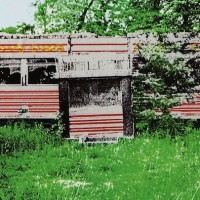Hall and Oates have always been an enigma. To this day, they remain an immensely talented duo capable of some of the greatest white R&B vocal harmonies ever put down on vinyl.
Yet, during their heyday of the 1980s when they surpassed the Everly Brothers as the biggest-selling duo in history, they succumbed (just like everyone else) to the excesses of the synthesizer. They tallied up a ton of hits that included standards such as “Kiss on My List, “You Make My Dreams,” “I Can’t Go for That (No Can Do),” “Maneater,” and many more. But, to me, they often sounded more like a new wave act than one playing blue-eyed soul.
Don’t misunderstand me. They’re good songs. It’s just that the ’80s production values washed most of the urban grit out of their arrangements. More recently, as Hall and Oates perform the same songs properly with a drummer who isn’t a robot, they have become masterworks of the genre the two Philadelphians love so much.
Hall and Oates began their career with so much promise. After the listenable folky debut LP Whole Oats, they achieved greatness with one of the best albums of the classic-rock era. Released on Nov. 3, 1973, Abandoned Luncheonette is best described by the term “acoustic soul,” because so much of it sounds like folk music with R&B-stoked Philly harmonies.
The album opens with one of their greatest tracks, Daryl Hall’s “When the Morning Comes,” and moves gracefully to John Oates’ “Had I Known You Better Then,” in which his rich baritone nicely complements Hall’s higher register. The same can be said of “Las Vegas Turnaround (The Stewardess Song).”
Their classic collaboration “She’s Gone” follows and, although it wasn’t an overnight success, the single eventually became a huge early hit and one of the finer accomplishments of their career. Side one, in which Oates is both an equal and outstanding contributor, closes with his excellent “I’m Just a Kid (Don’t Make Me Feel Like a Man).”
If you stop listening here, you’ll wonder why Hall became the star while Oates’ contributions were pushed into the background.
The four songs on side two are dominated by Hall and, while he was still working with Oates as a true team, they are less memorable when compared to the genius of side one. If the flip side stands all by itself, the title track, “Lady Rain,” “Laughing Boy,” and the album’s closer, “Everytime I Look at You” (complete with a banjo, an instrument the duo is not known for using) are also quite enjoyable.
Thankfully, after almost a decade long sabbatical in the ’90s, Hall and Oates returned in the new century – and this time, they ditched most of the computerized gadgetry.
- Why I Still Can’t Bring Myself to Mourn Peter Yarrow of Peter Paul and Mary - March 24, 2025
- Louis Armstrong – ‘Louis In London: Live at the BBC’ (2024) - January 17, 2025
- Let ‘South of the Snooty Fox’ Open Your World to Underrated Sterling Harrison - July 8, 2024


